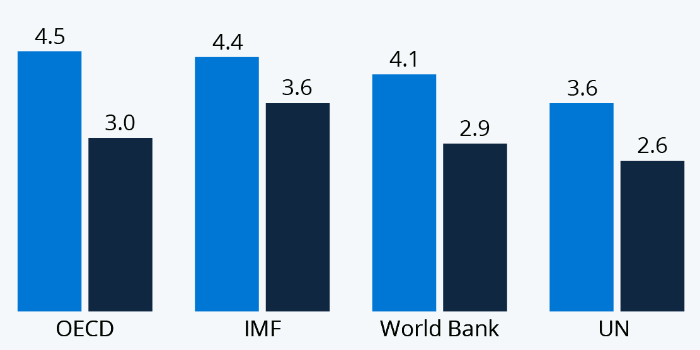All major international organizations, such as the IMF, World Bank, OECD and UN, have lowered their forecasts for global economic growth in 2022 by about one percentage point compared to the period leading up to the Ukrainian conflict.

Global economic growth forecasts (from left to right): OECD, IMF, World Bank and UN. Blue — forecasts made before the Ukrainian conflict, blue — after. Source: Statista
The global economy entered 2022 with expectations of a strong recovery from the pandemic. However, the conflict in Ukraine has greatly affected the global economic outlook in all its dimensions. By causing a spike in commodity prices, the conflict is threatening food security in many parts of the world, adding to financial stress, straining global supply chains and generally exacerbating high levels of uncertainty around the world.
All major international organizations such as the IMF, the World Bank, the OECD and the UN have revised their forecasts for global economic growth in 2022 downward by about one percentage point compared to the period leading up to the Ukrainian conflict. In addition to lower growth, inflationary pressures are strongly felt in many countries, reaching their highest level in many years in the largest countries, according to the OECD Economic Outlook report for June 2022.
Recent country reports indicate that most countries in the world will see lower growth rates, higher inflation, or both, due to the Ukraine conflict. And the consequences are projected to be long-term, and they vary considerably between countries depending on their economic ties with Russia and Ukraine.
The Ukrainian conflict has had a direct impact on global food markets, given the role of the Russian Federation and Ukraine as major exporters of staple agricultural products such as wheat, sunflower oil, barley and corn, as well as the market for perishable products such as fruits and vegetables.
